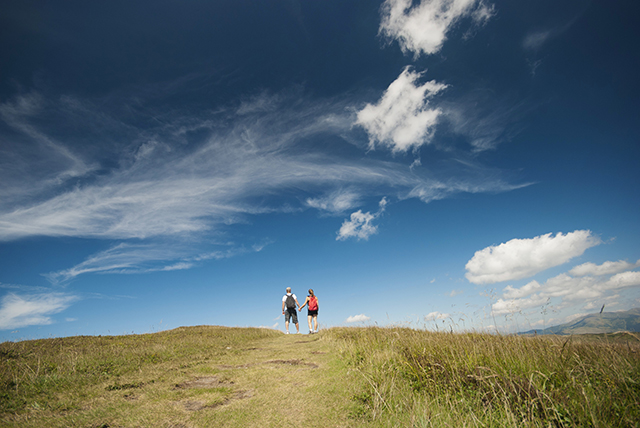There’s no doubt that Tunisia has always been something of a tourist hotspot, but most of the visitors that are attracted to it do so because of the golden beaches and immense culture that it provides.

Something that is sometimes overlooked is its stance in relation to hiking. Sure, the travel brochures might not always talk about this, but few would disagree that Tunisia has some of the best hiking routes around and you really can get more out of them than most people imagine.
Some people will take a chance and touch down in the Sahara, although most of the time groups will hit the countryside and taste the very best from the country in this regard. With so many sightseeing attractions there really is an immense amount of opportunities, as we take a look at the five best hikes followed by some typical advice that you should look to follow if you opt for this experience.
Hike #1 – Chenini
We’re going to start with something of a long hike and for anyone who likes to experience mountain life, this could be a favorite. Starting in Chenini, the idea is to hike over to Douiret. As the route can be somewhat difficult to navigate, a local guide is always advisable but never absolutely necessary.
The best part of this hike is that you will learn all about Berber culture. You will find out how the people in these villages live and in doing so, you will be walking almost 13 miles. While the official guides will say that you can complete this in over four hours – most people will walk at a slow pace to really get to grips and enjoy the local culture.
Hike #2 – Korbous (incorporating Ain Kanessira and Robinson’s Creek)
This next hike is somewhat deceiving. In terms of mileage, you’ll only be trekking 3.5 miles – which naturally makes a lot of people feel that it will be relatively easy to combat.
However, don’t let the length fool you. While short, the rocky terrain can make it very difficult to complete and some inexperienced hikers might have difficulty. It’s for this reason that the average time that people complete it tends to be around seven hours.
Nevertheless, don’t let the potential complexity sway you away. The route, starting from Korbous and incorporating Ain Kanessira and Robinson’s Creek, offers everything from unique rock formations to hot baths. Suffice to say, it has plenty of exquisite views as well.
Hike #3 – Djebel Boukornine
Next on the list is a hike that certainly has a degree of uniqueness about it – mainly because of the potential to bump into the military.
That’s right, if you venture too far up this mountain, you will stumble into a military base and it should go without saying that you shouldn’t be there.
However, military aside, there’s plenty to see on this four-mile hike. You’ll be climbing over 2,350m, meaning that it’s not for the faint-hearted, while you will pass through the now abandoned Boukornine National Park which offers some purely breathtaking views.
Hike #4 – Mides to Tamerza
This is another suggestion which involves you hiking from one village to another. Again, the beauty of this is that you really can dive into local culture, but in the case of these two villages they are surrounded by canyons and gorges which just make the whole experience even more fascinating.
You can expect to walk around 2.8 miles for this route – which makes it absolutely perfect for those of you who don’t want to spend the whole day out on your feet.
Hike #5 – Zaghouan (via Sidi Bougrabine)
We’ll conclude with another long hike – with this Zaghouan route being approximately 12.5 miles in length. There’s no doubt that this is the most difficult on our list either, for the simple reason that as well as being relatively long you’ll be climbing almost 4,000m.
If you can locate the southwest and west face of the mountain you really will be in luck, and be able to see some of the most breathtaking views around. The other side of the mountain is much more difficult to navigate (some would suggest almost impossible) but even if you do lose your way a little you still have the beautiful village of Zaghouan to return to.
What physical preparation should you engage in prior to hiking?
If you’ve been convinced from the above, it’s time to get your body prepared. There’s no doubt that if you’re taking a casual approach to this, you really don’t need much preparation. In other words, anything that’s just a couple of miles isn’t going to strain your body – although the heat might start to get to you.
In fact, it’s in the above cases where the only things you really need to think of is equipment. This generally comes in the form of clothing and water – ensuring that your body is offered sufficient protection from the sun in peak months, and also making sure that it receives enough hydration.
It’s only when you start to get on the more advanced routes that you need to take a more detailed look at preparation. In fact, on the most part, this will revolve you taking the necessary steps long before you travel.
We’re specifically referring to fitness and exactly what your body is going to be able to cope with as you embark on your hike. As we’ve already seen, some of the treks are long to say the least, and just turning up and expecting to complete them just isn’t going to be sufficient. Instead, try and look to train in the following areas:
Weight training
For an experience that most would associate with cardio training, there might be some raised eyebrows at this first suggestion. However, if you can train your upper and lower body, it will be invaluable on those occasions where your body is starting to tire from the backpack.
The aim here isn’t to “bulk up”, but rather improve your strength and conditioning. This means that you should be looking to focus on 12-15 reps – concentrating specifically on the arms, shoulders, legs, back and chest.
You can use supplements to speed up the process, click here to visit UseLegalSteroids and take their quick supplement finder quiz to get the product that suits your particular goal.
Cardiovascular training
Now for the type of training that most people will expect. You’re potentially walking for an entire day, so it stands to reason that your cardiovascular system needs to be in optimum shape. You should be looking to train three to five days a week – with your sessions being up to sixty minutes in length.
You’re not looking for ultra-high intensity here, just something to get your heart pumping. In terms of specific examples, something like cycling or stair-climbing are perfect ones.
We should also conclude this preparation section with a mention of your nutrition. As anyone who has embarked on any form of training will testify, a lot of success is related to what goes into your mouth. Suffice to say, eradicating as many fatty foods as possible should be one of your aims, and replacing them with lean proteins, fruits and vegetables should follow. If you can drop a belt size, it will make your hike much easier to manage.
Summarizing the best hikes in Tunisia
As you can see, the variety of hikes that are available in Tunisia is pretty wide. While some visitors will simply enjoy a couple of hours around local villages, any hiking enthusiasts out there really can sample some of the best walks around courtesy of the immense culture and beauty that this country provides. Of course, if you are considering one of the longer routes, also think about your physical condition which really will be put under the microscope in some of these options.

